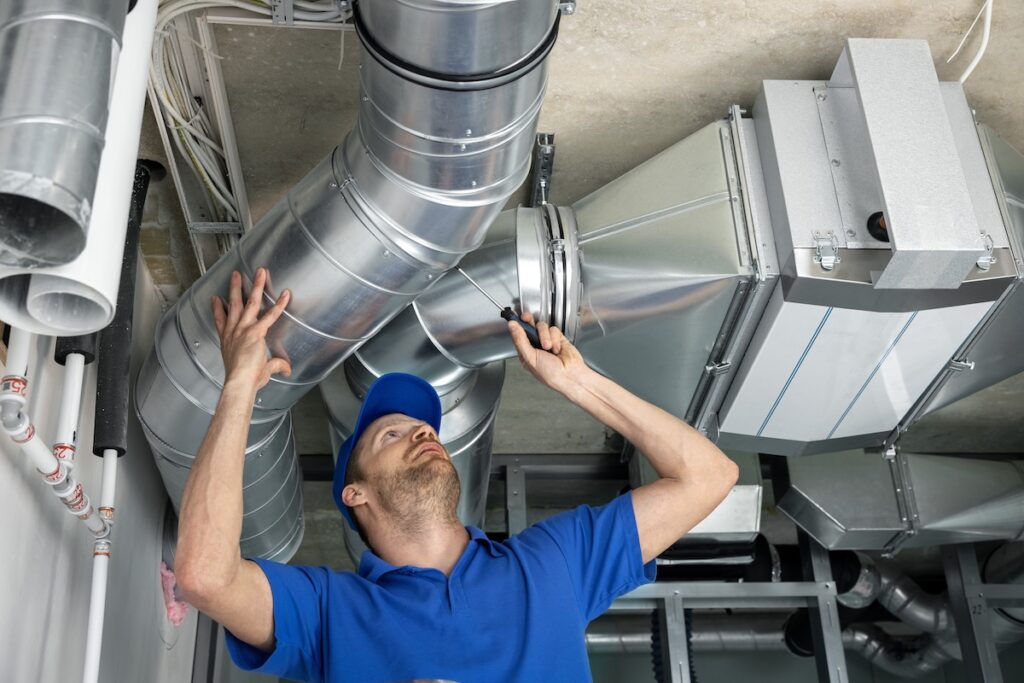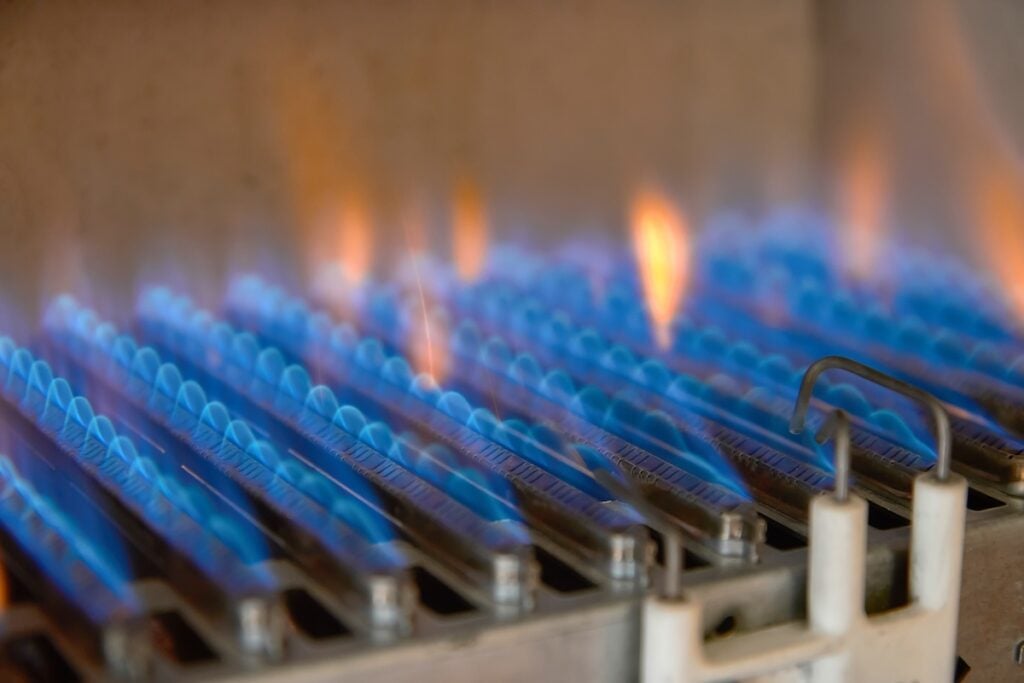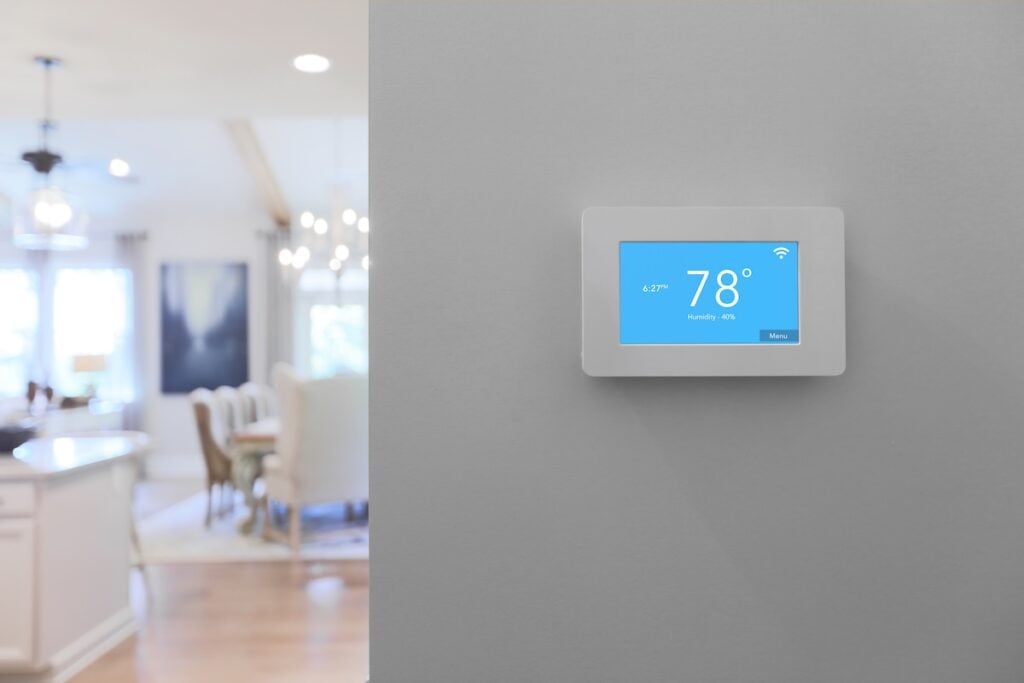What Is a Heat Exchanger Furnace? (Maintenance, Repairs…)

If you’ve heard about a heat exchanger furnace and are wondering what it does and why it matters, you’re not alone. Simply put, a heat exchanger furnace is a key component in your home’s heating system. It plays a vital role in efficiently warming your home while ensuring safety. Whether it’s understanding how it works, maintaining it, or knowing when to call for repairs, homeowners must familiarize themselves with this essential HVAC component.
Here’s what we’ll cover in this blog:
- What a heat exchanger is and how it functions in a furnace
- Common maintenance and repair tips for your heat exchanger furnace
- Indicators of potential carbon monoxide issues and how to protect your home
By the end, you’ll know exactly how a furnace heat exchanger operates, what signs to watch for, and why proactive care is crucial to keeping your home safe and comfortable.
🤔 Understanding How a Heat Exchanger Furnace Works
A heat exchanger is the workhorse of your furnace. It’s the technology that ensures the air you breathe is both warm and safe. Here’s how it operates:

The Role of the Heat Exchanger in Heating Your Home
- Primary Heat Exchanger: The primary heat exchanger is where the magic starts. When your furnace burns natural gas, the combustion gases heat the metal walls of the primary heat exchanger. These walls separate the dangerous gases from the air that circulates into your home, transferring heat as a result.
- Secondary Heat Exchanger: Not all furnaces have a secondary heat exchanger, but high-efficiency models often do. This component captures extra heat from the hot flue gas. This not only ensures your furnace runs efficiently but also reduces waste.
Combustion Chamber and Heat Transfer Process
The combustion chamber is where natural gas ignites. This process releases combustion gases, including hot flue gas, which heats the heat exchanger. The warmed exchanger then raises the temperature of the air circulating through your home. Thanks to this system, you enjoy consistent and effective heating without direct exposure to the combustion gases.
Safety Note: The heat exchanger is designed to ensure that harmful gases, like carbon monoxide, do not mix with the air you breathe. Any cracks or damage to the heat exchanger can compromise this separation, making maintenance critical.
🛠️ Maintenance for Your Heat Exchanger Furnace
Regular maintenance of your furnace heat exchanger can extend its lifespan, ensure efficiency, and prevent safety hazards. Here’s what you need to know:
Importance of Routine Inspections
Annual inspections by licensed HVAC professionals are essential. During these visits, technicians can:
- Check for cracks or damage in the primary heat exchanger.
- Ensure your secondary heat exchanger, if applicable, is free of buildup or blockages.
- Inspect the combustion chamber to confirm it’s functioning efficiently.
Routine inspections catch small issues, like a minor crack, before they become dangerous problems.
Why Cleaning Matters
A dirty HVAC heat exchanger can hinder efficiency. Over time, dust, soot, and debris can accumulate and block airflow, causing your furnace to overwork. Cleaning these components helps with:
- Maximizing heat transfer efficiency.
- Preventing corrosion from substances left behind by hot flue gas heats.
- Ensuring that your furnace burns natural gas effectively.
DIY Maintenance Tips
While regular checkups from professionals are a must, you can take a few steps to maintain your heating system between visits:
- Change your air filter every 1-3 months to maintain proper airflow.
- Keep the area around your furnace clear of clutter for safety and ventilation.
- Listen for unusual noises like banging or rattling, which could indicate a problem within the heat exchanger.

🔍 How to Spot Issues with Your Furnace Heat Exchanger
Even with proper maintenance, heat exchangers can develop issues over time. Catching these early can prevent costly repairs or dangerous situations.
Signs of Trouble
- Unusual Smells: If you smell something akin to sulfur or burning metal, it might be indicative of a problem in the combustion chamber or heat exchanger.
- Rust or Corrosion: Visible rust on your furnace components, including the primary heat exchanger, is a red flag. This could result in cracks or air leaks.
- Yellow Burner Flame: A furnace should have a steady blue flame. A yellow one might indicate improper combustion, which could lead to carbon monoxide risks.
- Frequent Cycling: If your furnace turns on and off too often, the HVAC heat exchanger may not be functioning efficiently.
Dangers of Carbon Monoxide Leaks
A cracked furnace heat exchanger can allow carbon monoxide to leak into your home. This odorless, colorless gas is extremely dangerous and requires immediate attention. Protect your household by:
- Installing a reliable carbon monoxide detector near your furnace.
- Testing the alarm regularly to ensure functionality.
- Addressing any detected leaks with urgency and professional assistance.
⭐️ Repairs and Replacements for Your Heat Exchanger Furnace
Sometimes, issues with your heat exchanger will require more than maintenance. Knowing when to repair or replace your furnace can save you money and stress in the long run.
When to Repair
Minor wear and tear, like small cracks, can often be repaired, especially if caught early. Professional technicians use specialized tools to seal these cracks and restore optimal function.
When to Replace
If your secondary heat exchanger is damaged beyond repair or your system is over 15 years old, replacement is often the better option. Higher efficiency furnaces are worth considering, as they include advanced technologies like dual heat exchangers.
Costs to Expect
The cost of repairs or replacement depends on factors such as:
- The type of heat exchanger (primary or secondary).
- The age and model of your furnace.
- The extent of the damage.
Replacing the heat exchanger alone may cost several hundred dollars, but upgrading the entire system can provide significant energy savings over time.

✅ Keeping Your Heat Exchanger Furnace Running Smoothly
Maintaining your furnace heat exchanger is all about preventive care and timely repairs. Follow this checklist to extend the life of your system:
- Schedule yearly inspections with an HVAC professional.
- Replace air filters regularly to prevent clogs.
- Address strange smells or noises as soon as they arise.
- Install and maintain carbon monoxide detectors.
- Upgrade to an energy-efficient furnace if your current one is aging.
💪 Why Choose Monarch Heating and Cooling
When it comes to your home’s comfort and safety, you need a team you can trust. At Monarch Heating and Cooling, we specialize in keeping your furnace heat exchanger in top condition. Here’s why we’re the right choice for your HVAC needs:
Don’t wait for your furnace to fail before you act. Contact Monarch Heating and Cooling today for an inspection, repair, or upgrade. Your satisfaction is guaranteed!
Need HVAC Service?
Contact the experts at Monarch Heating and Cooling.
Call us at (406) 213-8281!
